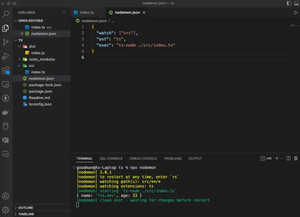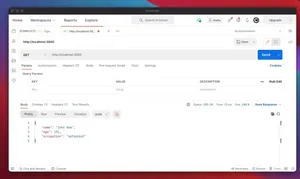The Problem
The E11000 duplicate key error is a common issue that arises when working with Mongoose in a Node.js application, particularly concerning the indexing of documents in a MongoDB collection. This error occurs when a write operation attempts to insert or update a document in the collection with a value that already exists in a field that has a unique index. MongoDB enforces the uniqueness of index values and therefore will not allow two documents to have the same value for that indexed field.
Possible Solutions
Solving the Conflict with Index Keys
One way to resolve this problem is by ensuring that all values for fields with unique indexes are in fact unique. If your application logic inadvertently generates duplicate values for such fields, consider using UUIDs or another strategy for value generation that guarantees uniqueness. Ensuring uniqueness at the source can often preempt E11000 errors.
Schema Design and Indexes
Another solution involves inspecting the schema design. Let’s ensure that the field meant to be unique is correctly defined. A typical approach to defining an indexed field in a Mongoose schema looks like this:
const mongoose = require('mongoose');
const { Schema } = mongoose;
const userSchema = new Schema({
email: { type: String, unique: true },
// ... other fields
});
const User = mongoose.model('User', userSchema);
If an index was manually added in the MongoDB database after some documents were already created, this could have introduced duplicates, so it’s wise to build the index in a way that avoids conflicts with existing data.
Handling at Runtime
Errors cannot always be preempted, and your code should gracefully handle them. With Mongoose, you can intercept and inspect errors that occur during operations:
const saveUser = async (userData) => {
const user = new User(userData);
try {
await user.save();
console.log('User saved successfully!');
} catch (error) {
if (error.name === 'MongoError' && error.code === 11000) {
console.error('There was a duplicate key error');
} else {
console.error('An error occurred:', error);
}
}
};
In this code snippet, we’re using async/await and encapsulating the save() operation within a try-catch block. If an E11000 error occurs, we’re checking the error code and logging it accordingly.
Updating Existing Documents
In some cases, if a conflict occurs, you might opt to update the existing document. This hinges on the specific application’s logic and requirements, but here is a simplified approach using Mongoose’s findOneAndUpdate method:
const updateOrSaveUser = async (userData) => {
try {
const updatedUser = await User.findOneAndUpdate(
{ email: userData.email },
userData,
{ new: true, upsert: true }
);
console.log('User updated or inserted:', updatedUser);
} catch (error) {
console.error('An error occurred:', error);
}
};
This method will search for a user by email and either update that user’s information or insert it if no document is found, effectively upserting the document while handling unique constraint errors internally.
Migrating Pre-Existing Data
If you’ve inherited a code base that did not enforce uniqueness from the start, there may be a need to clean up pre-existing data. This could include writing a migration script to resolve any duplicates. Depending on the complexity of the dataset and the field with the duplicate key error, you may merge records, delete duplicates, or assign unique values.
These solutions should give you a comprehensive approach to avoid the Mongoose E11000 error by ensuring there is no duplication in unique fields, improving schema designs, handling exceptions properly, and migrating pre-existing data if necessary.

